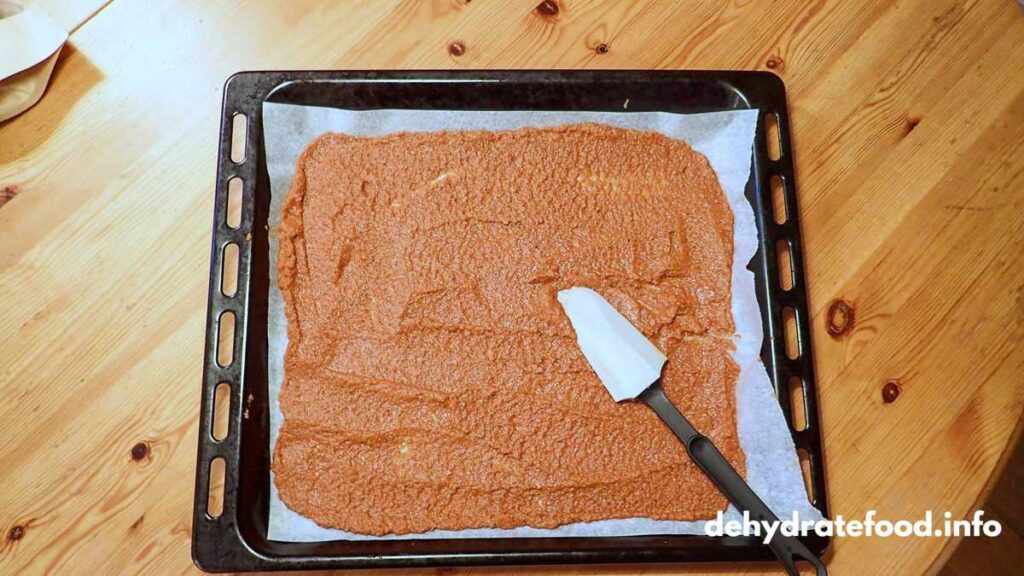
How to succeed: dehydrate whole meals
- Reduce water by simmering (reducing water by boiling). This is faster than dehydrating and makes it easier to spread on silicone sheets for drying.
- If there are bigger chunks in the stew, take them out and cut them into smaller pieces; you can also dehydrate them on the side.
- You can mix/pulse the stew/sauce to make it more even. Use a food processor, blender or hand blender.
Yes! It is possible to dehydrate whole meals like a stew – or meat, rice and a sauce mixed into a “one-pot” dish. The advantage of drying an entire meal or a stew is that you have more control over the taste. You cook it at home and can make sure that it has a proper taste. And as we all know, a sauce or a stew that gets simmering for an hour or two always tastes better.
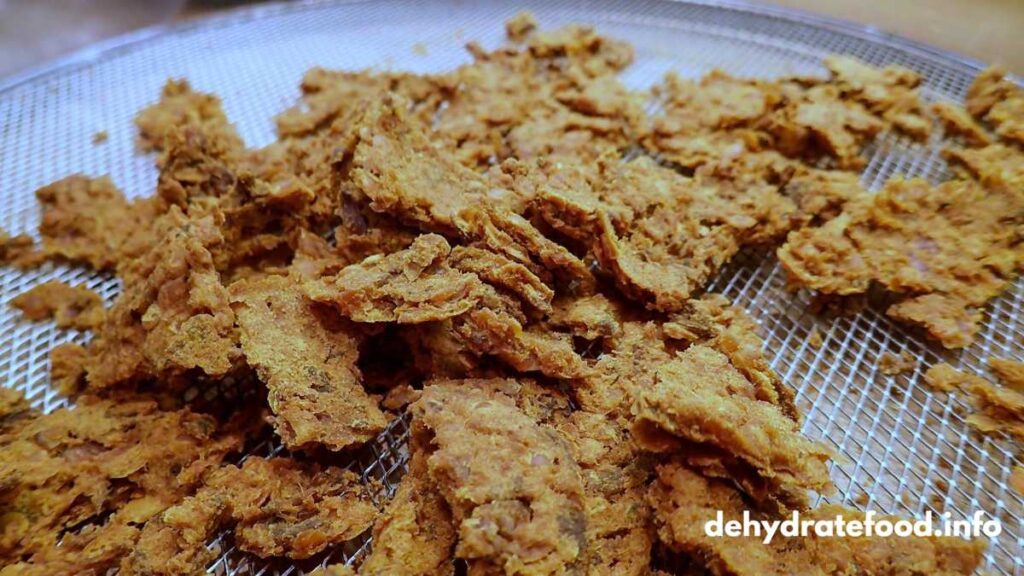
Dehydrate whole meals: temperatures & times
The times vary a lot, but expect at least 8 hours in the dehydrator, usually more.
| Stew with meat | 154°F (68°C) |
| Vegetarian stew | 125°F (52°C) |
Dehydrate a stew: steps in images
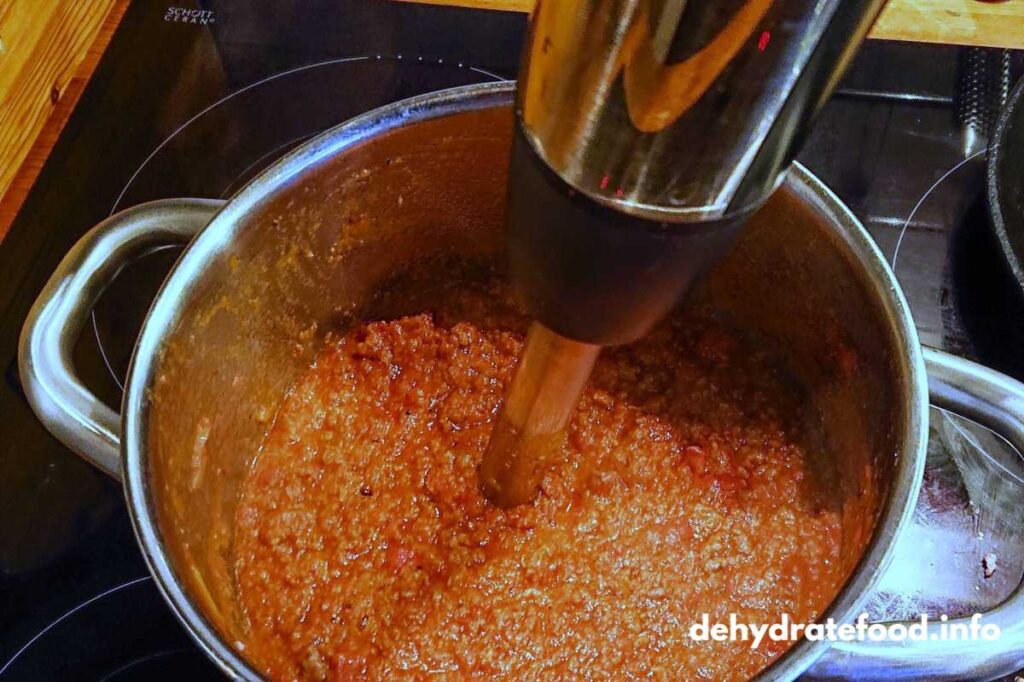
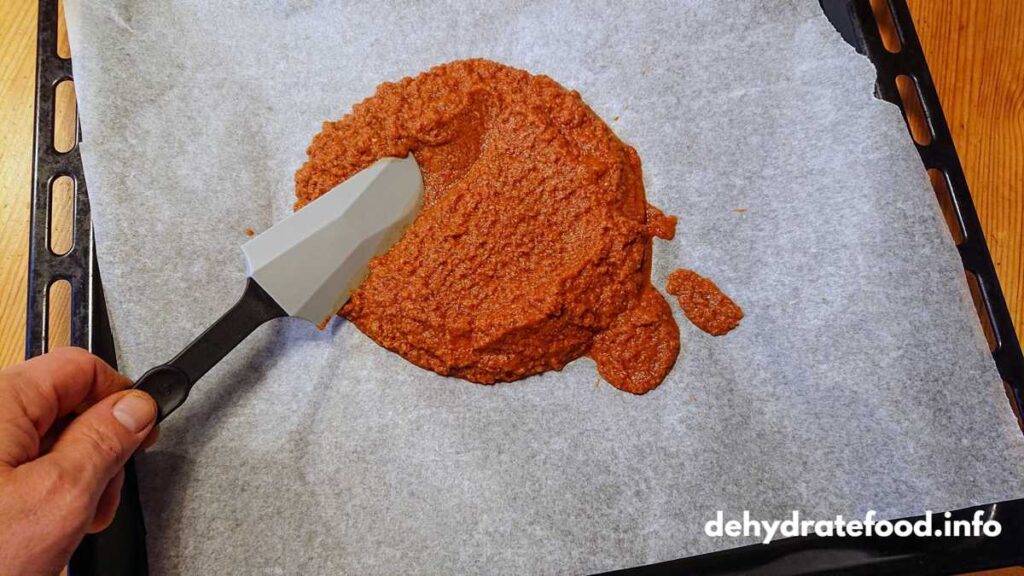

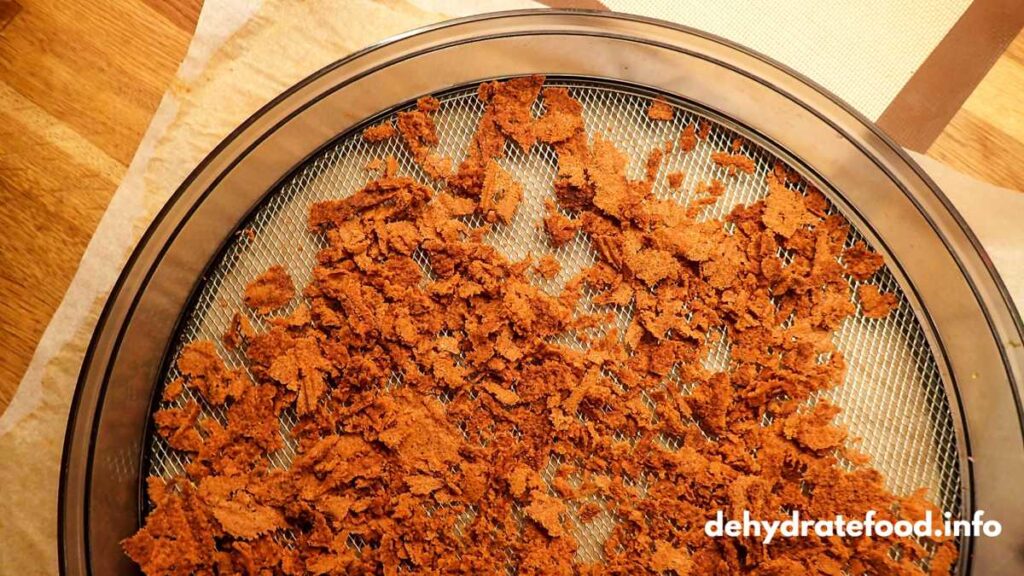
Dehydrate whole meals: follow these steps
1. Prepare and cook the stew
Make your stew with desired ingredients and flavors. Cook it on the stovetop or in a slow cooker until all the ingredients are fully cooked and the flavours have melded together. Make sure the stew is fully seasoned.
2. Cool the stew
This step is essential to prevent bacterial growth during dehydration.
3. Portion and spread
Once the stew is cooled, divide it into smaller portions suitable for dehydration. Ensure that each portion has a consistent mix of ingredients. Spreading the stew in thin, even layers will help the drying process.
4. Use a dehydrator
Place the stew portions onto the trays of your food dehydrator. Se temperatures above.
5. Check for doneness
Regularly check the stew during drying to assess its progress. The stew/sauce is fully dehydrated when it has a dry and brittle texture and all the moisture has been removed. You can lightly break a piece to check its dryness.
6. Store properly
Once the stew is completely dehydrated, allow it to cool to room temperature before transferring it to airtight containers or vacuum-sealed bags. Store in a dry, cool place away from direct sunlight. Fatty food in fridge or freezer. Vacuum packing is also an option
7. Rehydrating
To enjoy your dehydrated stew, add hot water to the desired portion and let it sit for a few minutes to rehydrate. Stir occasionally until the stew reaches the desired consistency. You may need to adjust the amount of water added based on personal preference.
Remember that the texture of the rehydrated stew may not be the same as the freshly cooked version, but the flavours will still be present. Adjustments to seasoning and moisture can be made during the rehydration process to suit your taste preferences.


